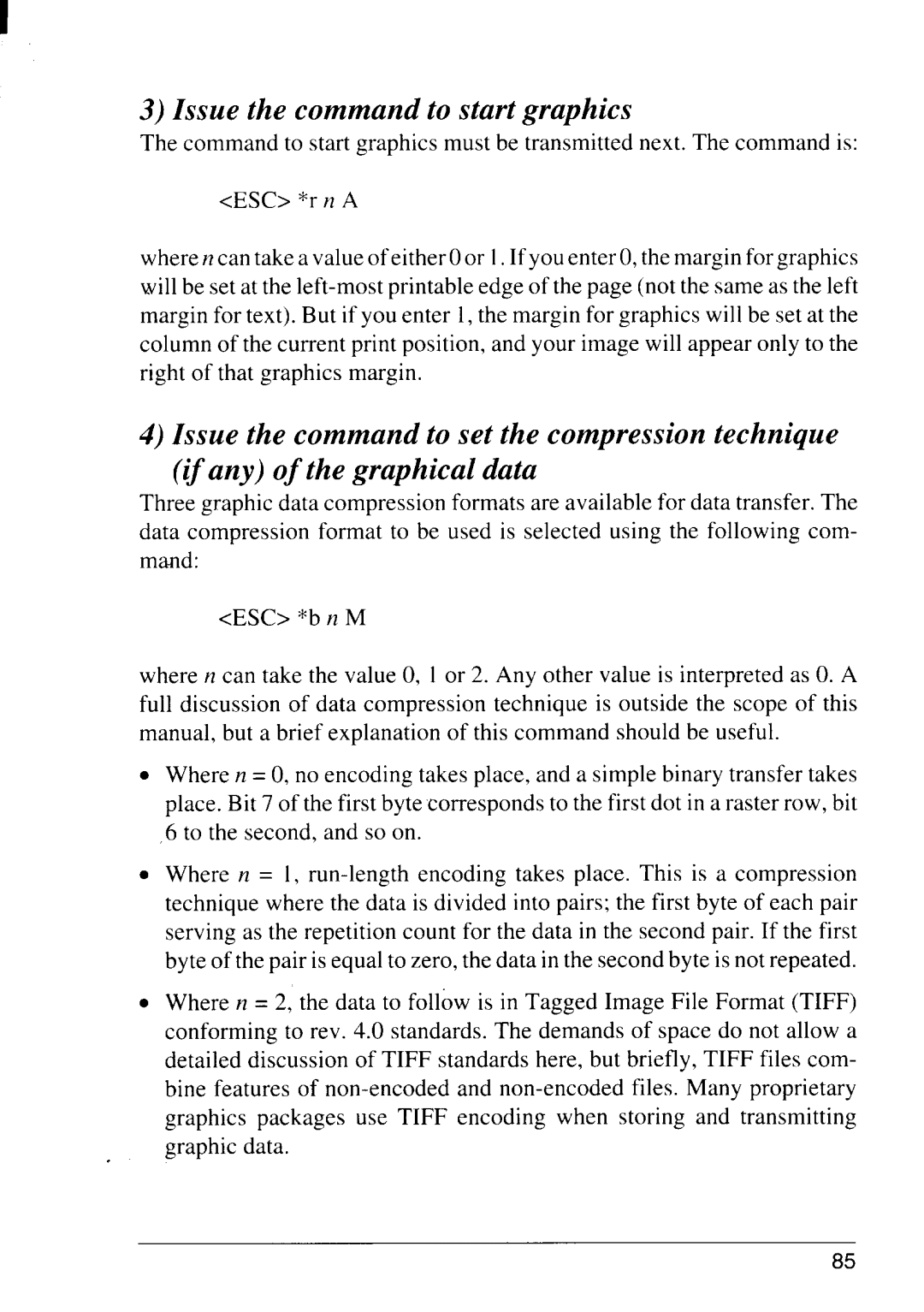
I | c | s | g |
The command to start graphics must be transmitted next. The command is:
<ESC> *r n A
where n can take a value ofeither Oor 1.If you enter O,the margin for graphics will be set at the
I | c | c | t |
ag d
Three graphic data compression formats are available for data transfer. The data compression format to be used is selected using the following com- mand:
<ESC> *b n M
where n can take the value O, 1 or 2. Any other value is interpreted as O. A full discussion of data compression technique is outside the scope of this manual, but a brief explanation of this command should be useful.
Where n = O,no encoding takes place, and a simple binary transfer takes place. Bit 7 of the first byte corresponds to the first dot in a raster row, bit 6 to the second, and so on.
Where n = 1,
Where n = 2, the data to follow is in Tagged Image File Format (TIFF) conforming to rev. 4.0 standards. The demands of space do not allow a detailed discussion of TIFF standards here, but briefly, TIFF files com- bine features of
85
